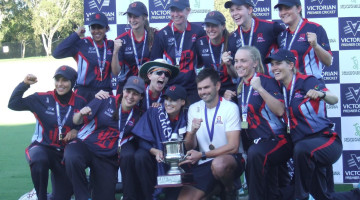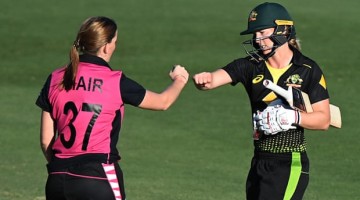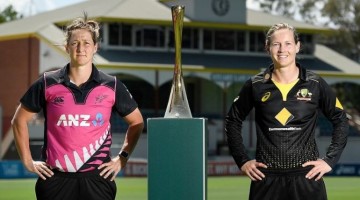
Less cricket little rewards
Sri Lanka Women cricketers head coach Lanka de Silva was critical of the country’s domestic format that allowed only a maximum of five matches a season for a woman cricketer.
“How can you compete with countries like Australia, England and New Zealand when you play so little cricket, where is the exposure and the experience,” De Silva questioned.
One of the main reasons for Sri Lanka Women’s 0-4 defeat in the four-match ODI series against the visiting Australian Women’s cricketers was the inability of our women batters to stay at the wicket for longer periods and build an innings.
Sri Lanka Women batted out the full quota of 50 overs only once in the four ODIs and this was partly due to their inexperience of playing matches.
“The difference between Australian Women and ours was that we were quite content hitting boundaries rather than running the singles,” said De Silva, a former wicket-keeper/batsman who played three Tests and 11 ODIs and one of the few batsmen to score over 10,000 first-class runs.
“If you run the singles and twos only can you build an innings and occupy the crease, that’s what the Australian Women did. They would score a fifty but it would comprise only two or three fours whereas our women would make a quick 30 with six fours and get out,” he said.
“This happens due to our women cricketers’ inexperience and that can be countered by playing more matches. There are eight teams in the domestic tournament and they play in two groups. If you are lucky to reach the final you will get a maximum of five matches if not only three for the entire season.
“There are moves to make the domestic tournament matches two-day affairs, the sooner it is done the better for our cricket. Our women cricketers have the skill and the talent, what they lack is match experience,” De Silva stated.
“A coach cannot be sending messages to the middle constantly. They must learn to think on their feet and act according to the situation. That’s what the Australian women did.”
De Silva pointed out the main cause for Sri Lanka Women’s defeats at the hands of Australia was the failure of the batters to put sufficient runs on the board.
Sri Lanka made scores of 76, 176/9, 102 and 131 which was inadequate to give the bowlers a chance at the Australian batters.
“The batters didn’t perform their task. We played six batters but only one made runs consistently, maybe two can fail but not five,” lamented De Silva. “Our bowlers did a decent job.”
De Silva said that only one batter (Chamari Polgampola) made a half century in the entire series while several of the other batters got into their 30s and 40s but could not make it big.
Another drawback that De Silva revealed was the age at which our women cricketers take to the game.
“On an average they start by the age of 18 and by the time they mature they are almost 30. It is not an age to start teaching the basics of cricket,” said De Silva.
“There are moves to get schools to start playing cricket and at the moment there are about 30 schools playing fifty-over cricket in a competition. Mrs Apsari Tillakaratne (wife of former Sri Lanka Test captain Hashan Tillakaratne) is spearheading the drive,” he said.
Categories: Cricket



